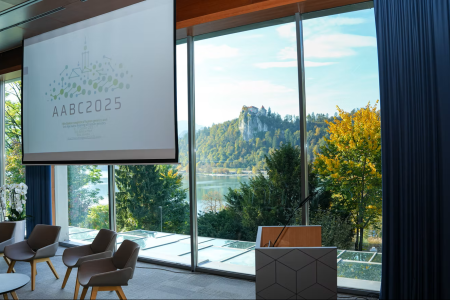One of the pilot projects launched under ERDERA’s predecessor, the European Joint Programme on Rare Diseases (EJPRD), has become a flagship example of successful public–private collaboration in rare disease research. Led by Professor Robert S. Lahue of the University of Galway, this preclinical project focused on triplet repeat expansion (TRE) diseases – a category of over 30 inherited neurological disorders caused by unstable DNA repeats. These diseases are difficult to treat, making this an important area for development of new tools to expedite drug discovery.
By the end of 2024, the initiative had achieved four major milestones: the development of a novel Triplet Repeat eXpansion assay (TRX) within just 30 months, the testing of five industry-supplied compounds via technology transfer, the launch of an open-access research platform, and the publication of a research paper.
These accomplishments are all the more impressive given that the initial pharmaceutical partner withdrew early on – a challenge overcome when a small biotech company LoQus23 Therapeutics stepped in to keep the work on track. Now adopted by the new ERDERA Accelerator Hub, this initiative serves as a reference model for guiding other projects past the preclinical stage.
Creating the TRX test in record time was no small achievement. In just 30 months, Professor Lahue’s team turned an idea into a working laboratory test that tracks tiny DNA changes linked to many rare brain disorders. The TRX test works by making cells light up when these changes appear, so researchers can spot them sooner and more accurately than before. “The goal of the TRX project was to make the triplet repeat expansions easy to detect. Working closely with partner labs in Glasgow and Cardiff and with LoQus23 Therapeutics, we developed a novel laboratory assay that makes cells glow green when an expansion occurs”, he recalls. “Detecting and measuring these green cells is straightforward, making the TRX assay portable to many different scientific settings”.
With the TRX assay in hand, the project forged ahead to apply it in drug discovery. The team collaborated with LoQus23 Therapeutics to test five exemplar therapeutic compounds with distinct chemical structures, showcasing the power of technology transfer between academia and industry. Because the TRX method is easy to share, each company could run the test quickly in its own lab dishes, giving everyone early clues about which drugs looked promising.
In parallel, the project placed a strong emphasis on open science. The team established an open-access research platform to share data, protocols and tools developed during the project with the wider community. This platform ensures that other researchers can build on the work, fostering a collaborative ecosystem around TRE diseases. The commitment to transparency was further underscored by the publication of an open-access scientific paper in late 2024 detailing the TRX assay and the project’s key findings.
Finding the right industry partner
When a large pharmaceutical backer withdrew, Cambridge-based LoQus23 Therapeutics stepped in and quickly became central to the effort. “We were thrilled to have the opportunity to work closely with outstanding academic groups to explore novel assay formats for a critical, but very demanding disease phenotype”, recalls Dr. Caroline Benn, Chief Scientific Officer at LoQus23 Therapeutics. “For a biotech such as ours, it is otherwise challenging to orthogonally validate our novel small molecule inhibitors that we are developing for the clinic – which gave the project a commercial lens from day one.”
Christine Fetro, who heads ERDERA’s Public-Private Collaboration Accelerator, says this case reinforced the value of flexible agreements as “it has checked all the boxes of a smart and mutually beneficial public-private partnership, a witness of the value and relevance of industrial collaboration at an early-stage project”. She insists on the importance of aligning it with the principles of the ERDERA Accelerator: “Respect, transparency, and a shared goal enabled both communities to move faster and smarter toward the possibility of a treatment for rare diseases with unmet needs”.
The project is now helping to shape best practices for future initiatives. The ERDERA Accelerator Hub holds it up as a model of how to sustain momentum in early-stage research and transition projects toward clinical impact. “Collaboration isn’t a one-size blueprint; it’s a flexible toolkit we resize for every scientific challenge. Sometimes the public sector leads with foundational science, other times industry drives the regulatory path—but the partnership must bend to what the project actually needs rather than force projects into a fixed mould,” says Daria Julkowska, Coordinator of ERDERA (and EJPRD before that).
The positive long-term implications are clear: by fostering open, resilient partnerships, ERDERA aims to accelerate progress in rare disease research – ensuring that promising projects like this one can deliver real benefits for patients.
Image by National Center for Microscopy and Imaging Research via Flickr CC BY-NC 2.0





